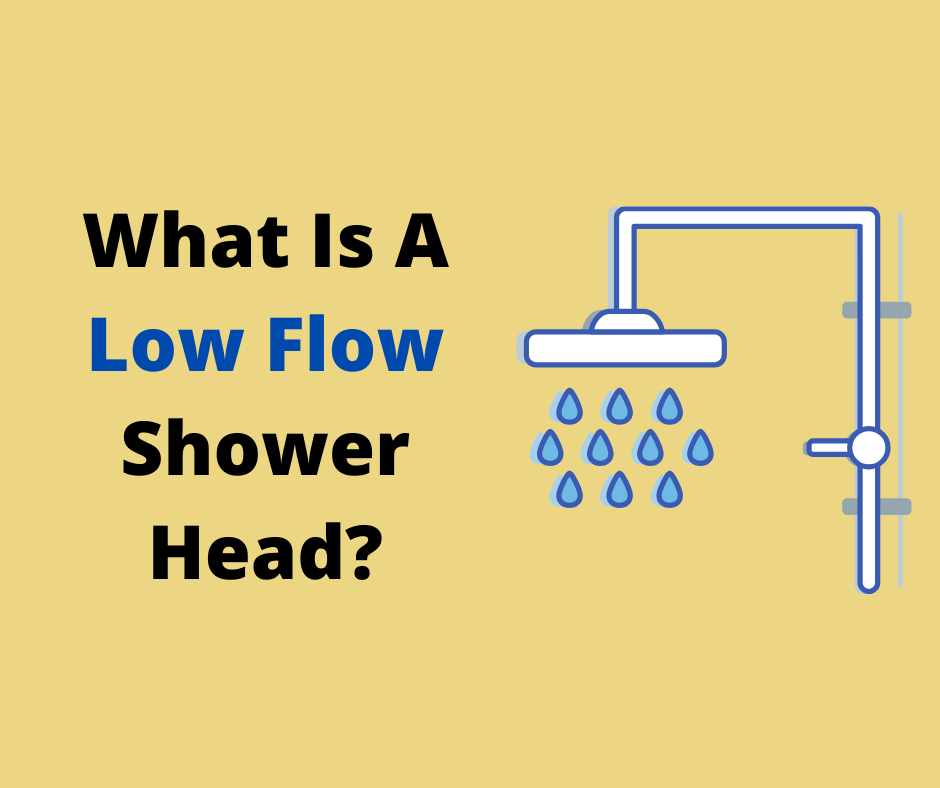
What is a low flow showerhead? Is it worth it?
Never heard of a low flow showerhead before?
Imagine it's Monday evening. You had a long and horrible day at work. You come home, take your shoes off, your clothes, and you get in the shower. That steamy water, running down your body: a heaven-like feeling. It literally takes away all your worries, stress, and emotions accumulated during the day. It's the one place your overbearing boss can't make any demands of you (hopefully). So does no one else for that matter.
But that guilty pleasure comes at a cost: gallons of wasted water and the energy it takes to warm it up. And that is a mood killer-at least for me.

Conserving water has become a national movement (it was about time). A lot of people already took a pledge to help the community to save water by taking showers instead of baths. Having done this, you may also be able to cut your carbon consumption still further by switching your regular shower head to one that reduces the flow of water.
By doing this, the average household could save thousands of gallons of water per year only by switching your showerhead. Considering that showering accounts for 20-30% of household water usage, this is a good and easy first step to take when making more environmentally-friendly changes, right?
How much water do we use?
According to the SDWF North Americans are using on average 370,000 gallons-1.4 million liters of water per year. I mean, what the heck?
All this while a large part of the world lives on around 1 to 4 flushes of water per day. And most of the time that's not even clean water.
Just to make a better picture of what is really happening-water related-around the earth, you can watch the Netflix documentary Rotten-Troubled Water episode. It will definitely change the way you see things.

This makes Canada and the US the highest consumers of water in the world.
Home Water Works says that in most homes, after toilets and clothes washers, showers are the third-largest user of water. The average American shower water usage is 17.2 gallons with the average shower length of 8.2 minutes. The average flow rate is 2.1 gallons per minute.

Here's where this shower usage can add up, however. Most Americans take just under one shower a day. For the sake of figuring out the potential impact of our shower energy consumption, let's call it six showers a week. At 17 gallons an average of 8-minute shower, that's 102 gallons of water used in a shower by one person for one week. Multiplying that by 52 weeks and you've got a whooping shower usage of 5,304 gallons in a year for one person or 21,216 gallons for a family of four only for showering.

How can you find out the flow rate for your shower head?
A quick tip to find out if your current showerhead is wasting water is to put a one-gallon container in the shower, turn on the water, and count the time it takes to fill it completely. In this case, less is more. If your container is filling to the one-gallon mark in fewer than 20 seconds, you aren't using a water-efficient showerhead. With a low-flow showerhead, it should take 24 seconds or up to 46 seconds for an ultra-low flow shower head to fill the container.
What is a low flow showerhead?

A shower head designed to reduce the amount of water that is wasted in order for your home to be more water-efficient will qualify as a low flow showerhead.
And of course, the same rule applies to the low flow faucet.
Showerheads can't control whether you're taking a long, luxurious shower, of course, but they can help reduce your water and heating costs. Still, if you're doing the average 8-minute shower per day, you're probably using around 17 gallons of water each time.
Taking all this into consideration, there are good reasons to invest in water conservation. Showerhead and faucet equipment that can work towards more energy-efficient showers can also help save you some money in the process.

Will a low flow showerhead affect my water pressure?

Low-flow does not mean lower pressure.
Older models of low-flow showerheads were less effective as they slowed the water pressure down to a trickle. However, the newer versions that have been coming out use a mix of smaller water holes and air to create stronger pressure for a more pleasant shower.
How much water does a low-flow showerhead really save?
Up until 1994, the average shower would waste about 5.5 gallons of water per minute. Due to its wastefulness, the Environmental Protection Agency (EPA) regulated shower heads to reduce the flow to about half that amount.
This, however, did not resolve the massive amount of wasted water and energy.
As it turns out, by installing a low-flow showerhead and a faucet aerator, an average family can save at least 4000 gallons of water per year. That translates to the amount of electricity a home would need to keep it powered for over 2 weeks.
Low flow vs Ultra Low Flow
While there are no firm definitions as to what constitutes an ultra low flow showerhead, the consensus is that if your shower head uses 1.5 or fewer gallons per minute, then it is considered an ultra low flow showerhead.
What is an aerator?

Aerators are small parts placed at the end of the faucets. Typically, they are small mesh screens that break up the flow of water into multiple streams, adding air in between.
By diluting the water stream with air, aerators significantly reduce the volume of water streaming through your faucet. All this, while maintaining the feel of a high-pressure flow.
Therefore, the two main reasons people are buying aerators is to save water and save money.
Why are energy-efficient shower heads important?
Low flow shower heads will not only help you save money in the long term, but they also go a long way toward water conservation.
For some people, it might not seem like a big deal, but for those living in a drought-prone area, every drop counts. Also, as we can clearly see that the climate is only getting warmer every year, draughts are more and more frequent even in places where this didn't use to be a problem.
Scientists warn us that 2020 might be the hottest year on record, and the predictions for the future are not great. Global warming is real.
- Keep energy costs down. Since you're using less water, your home is also using less energy to warm it up, so you save both your water and power bills. This way, you get to reduce the energy costs without sacrificing your showers.
- They're environmentally friendly. Less electricity means less carbon dioxide emissions into the environment. Again, one easy way to reduce your carbon footprint without giving up your comfort.
- Water conservation protects valuable drinking resources. Unless the water has gone through an extensive and expensive process of desalination, humans can't drink or use ocean water. Making freshwater is a valuable resource and contaminated water is a problem.
- When you use a lot of water, it burdens septic and sewage systems, which can end up contaminating the groundwater.
- Clean water will cost the taxpayers money. The city you live in will eventually have to invest and plan for new ways to produce clean water over time, and guess two will pay for that? Correct. The taxpayers-aka us

